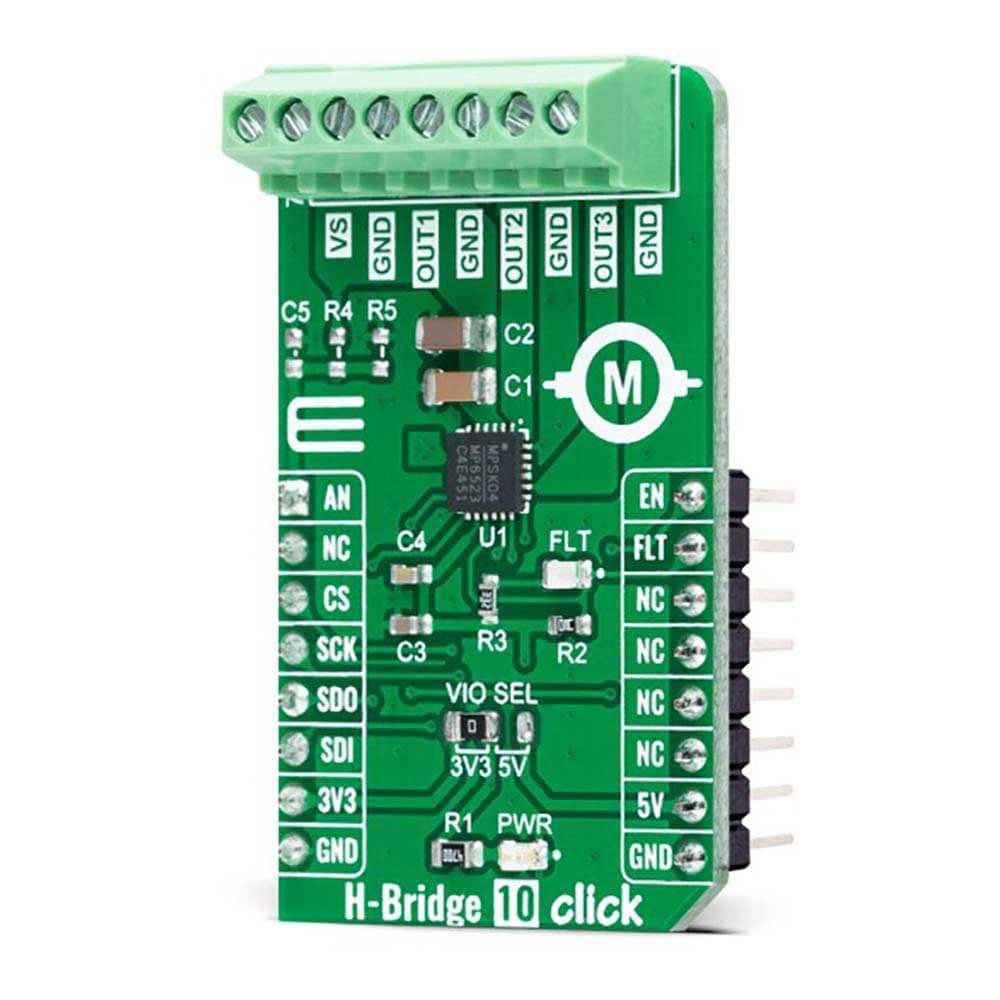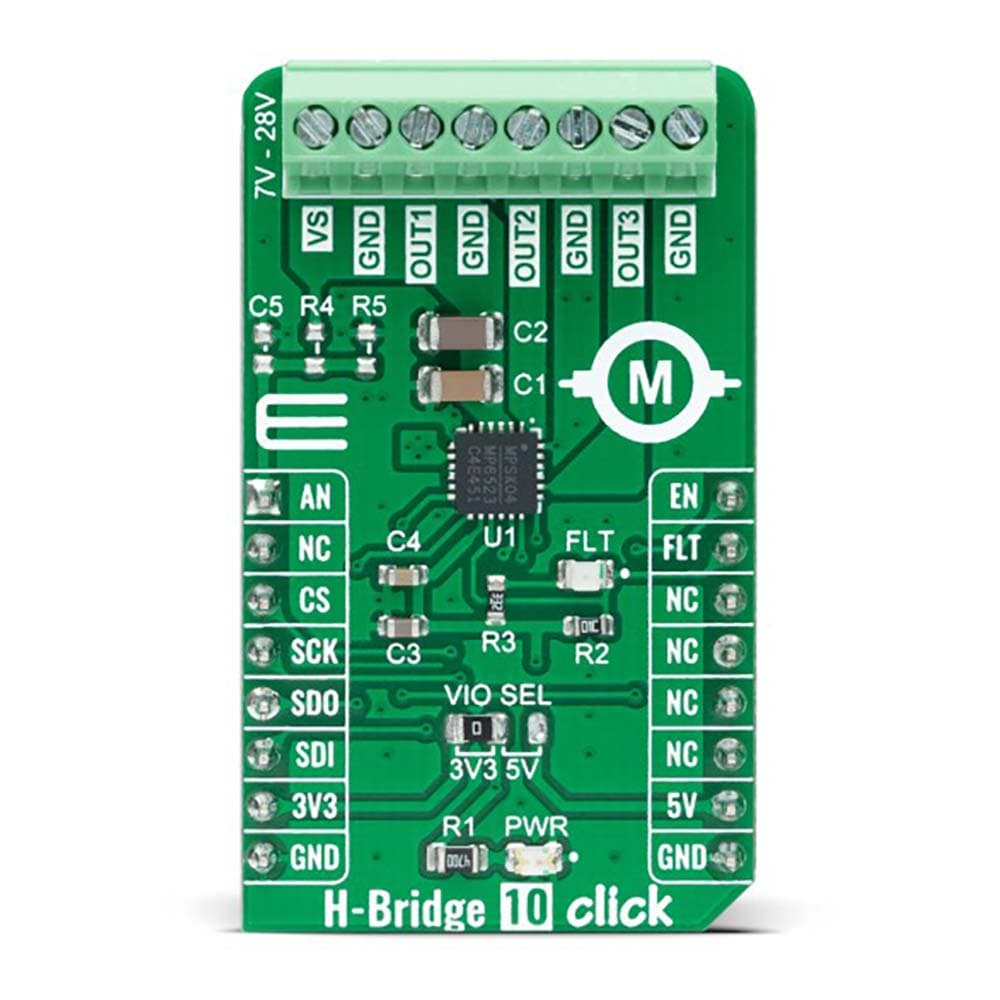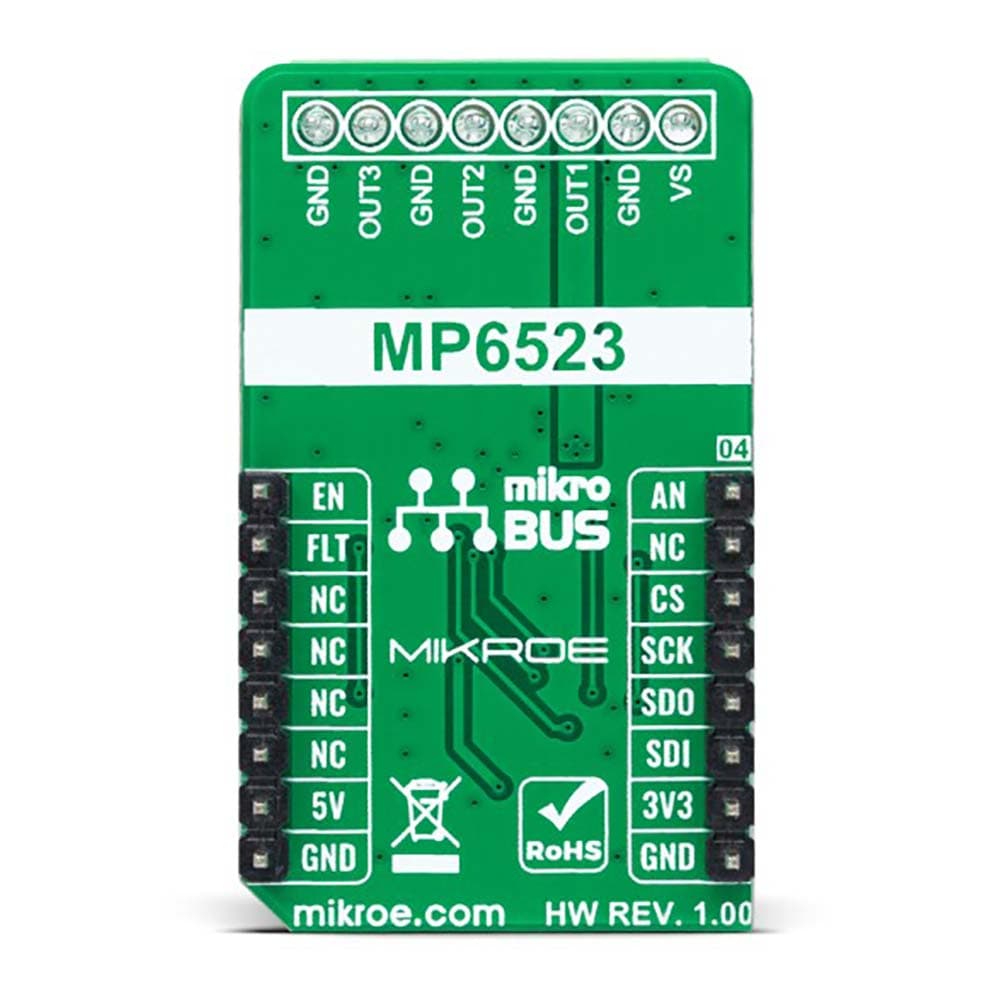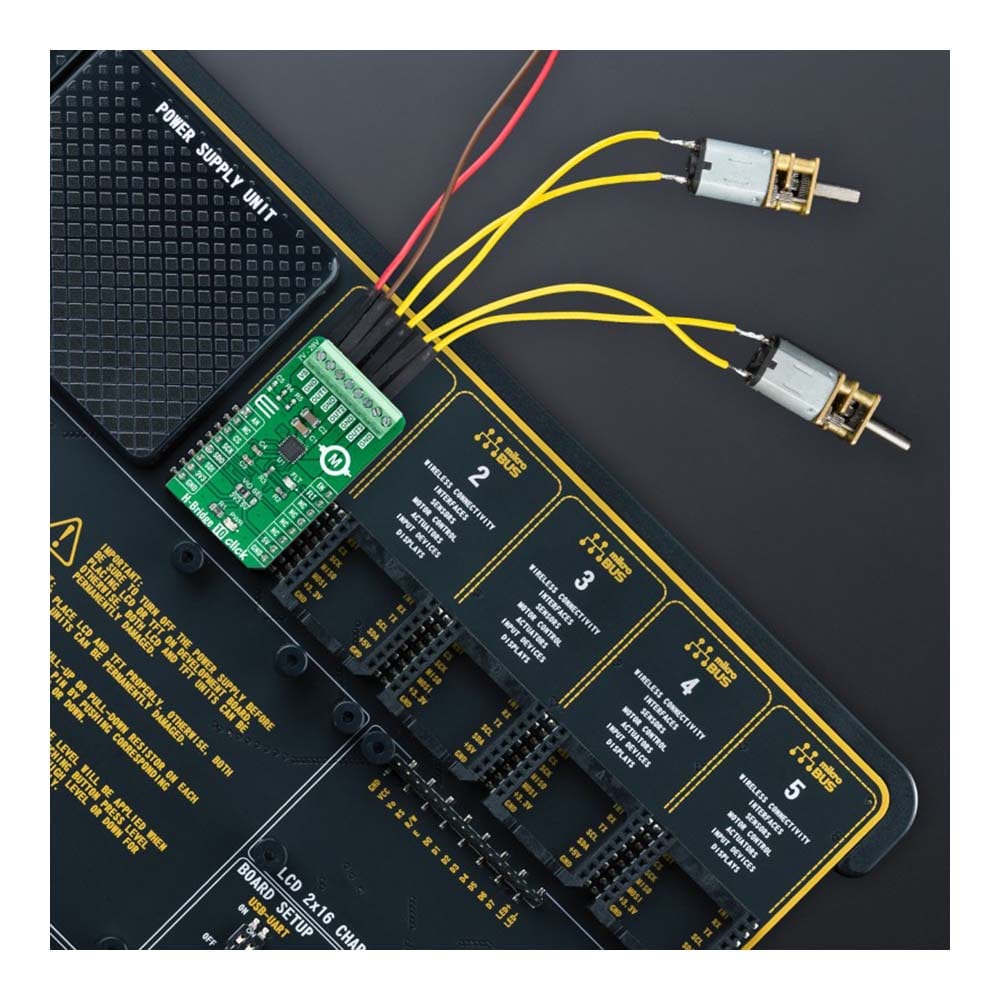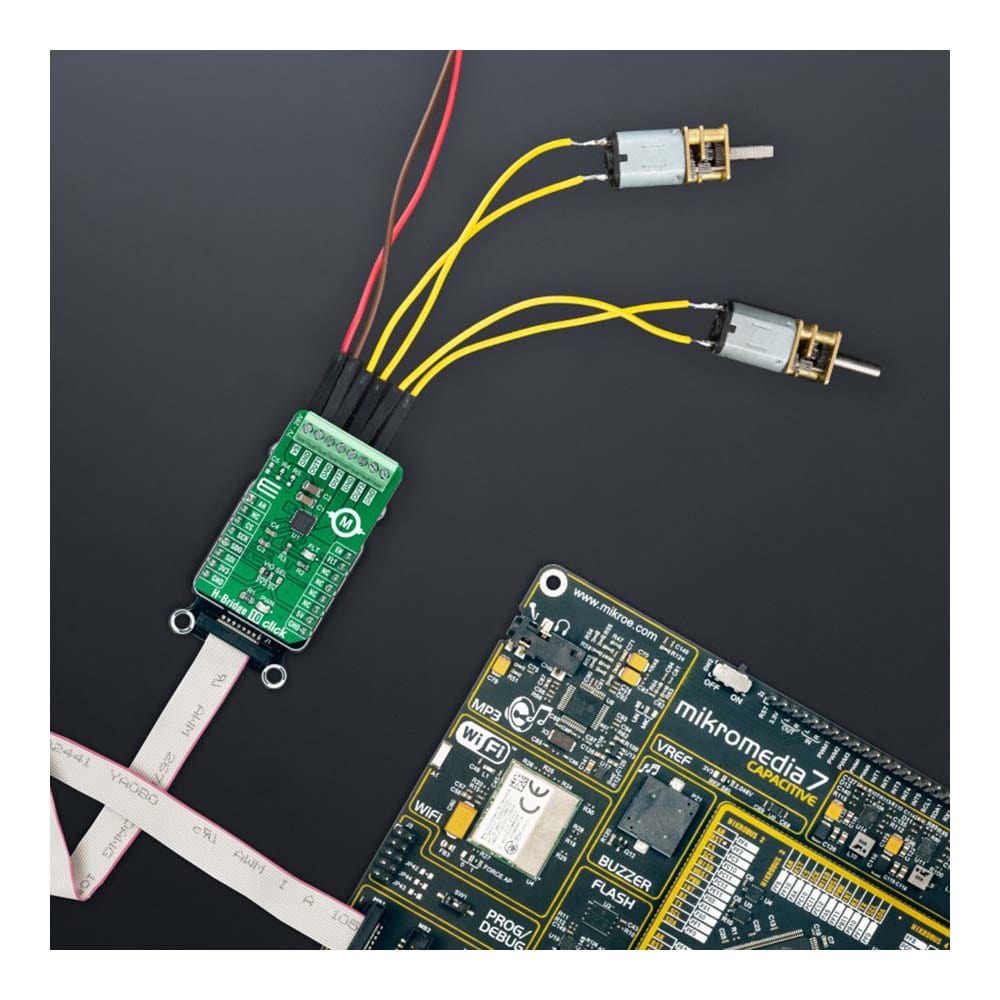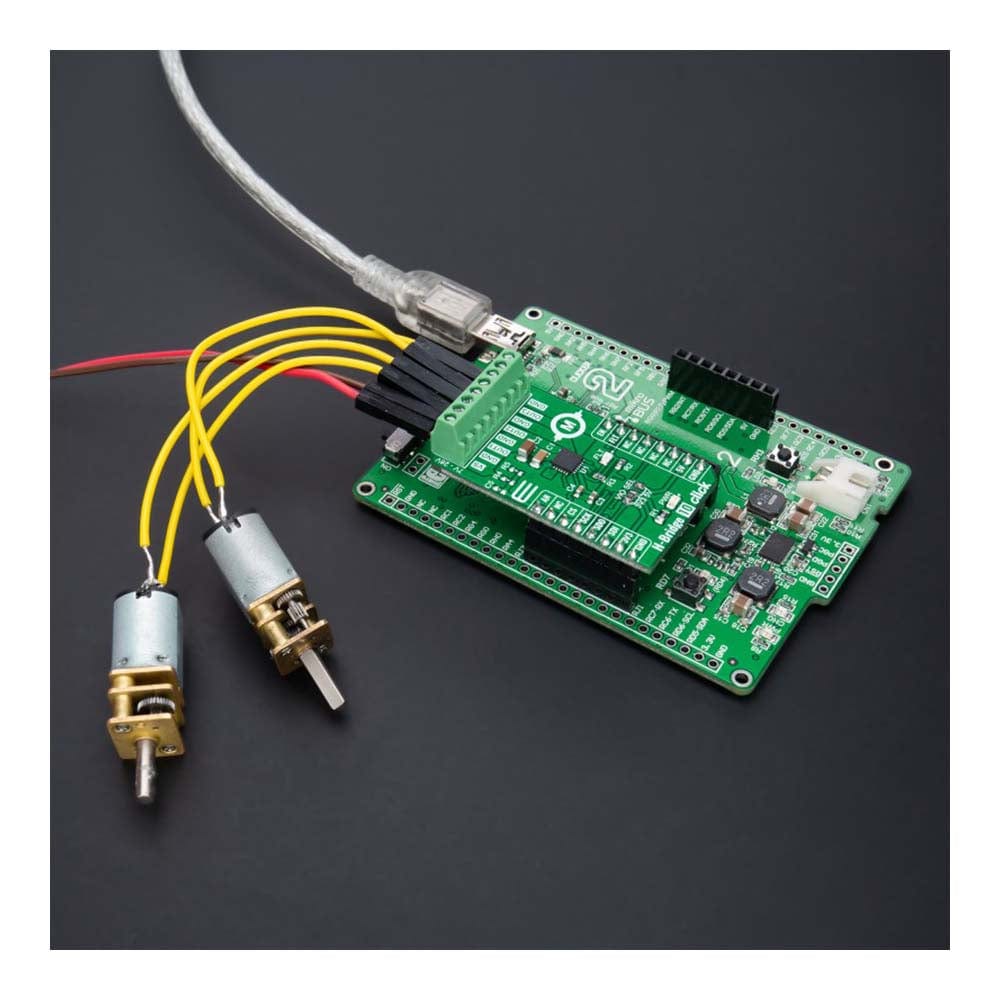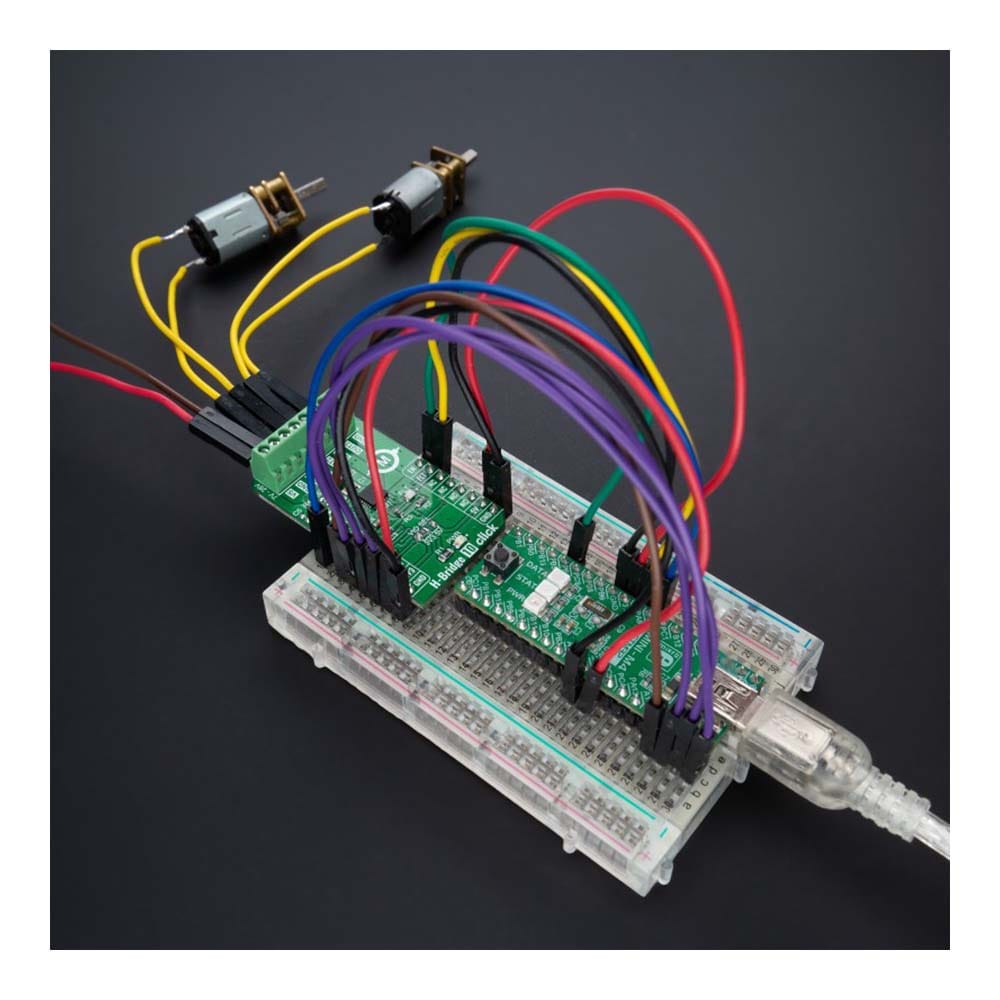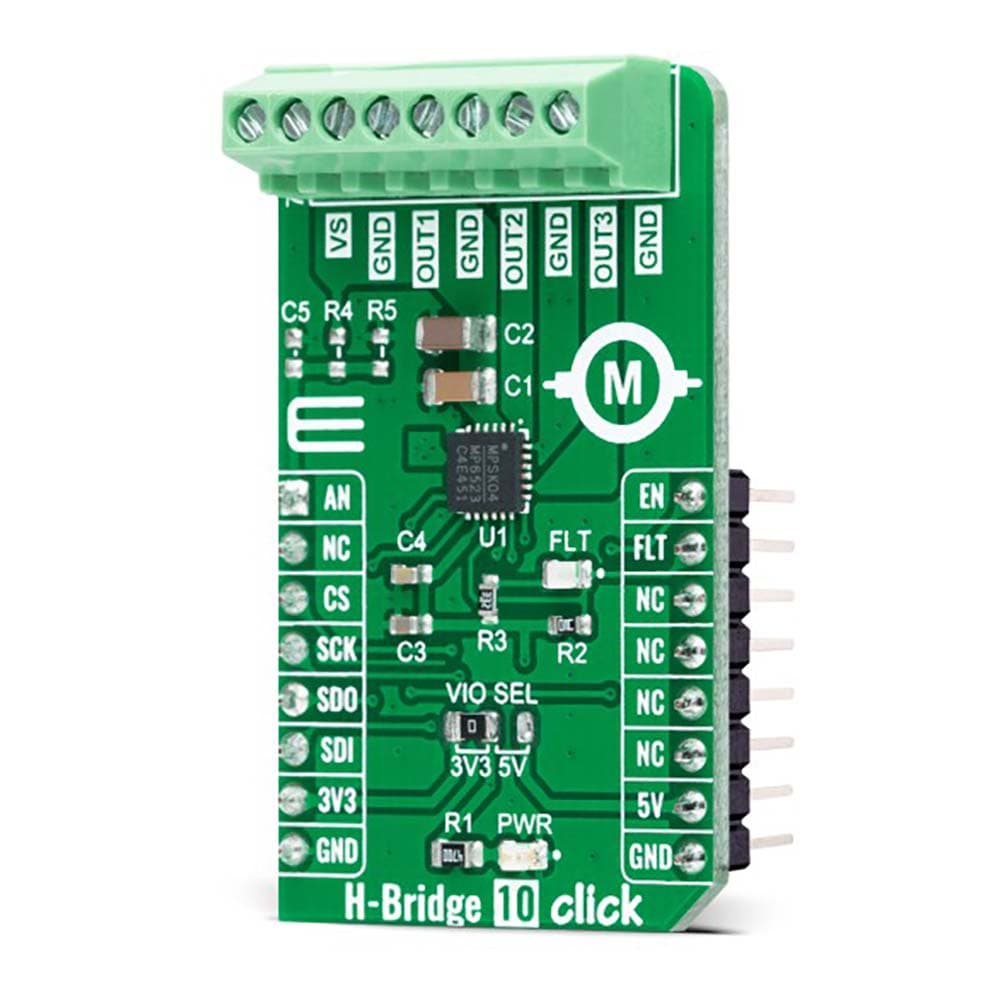
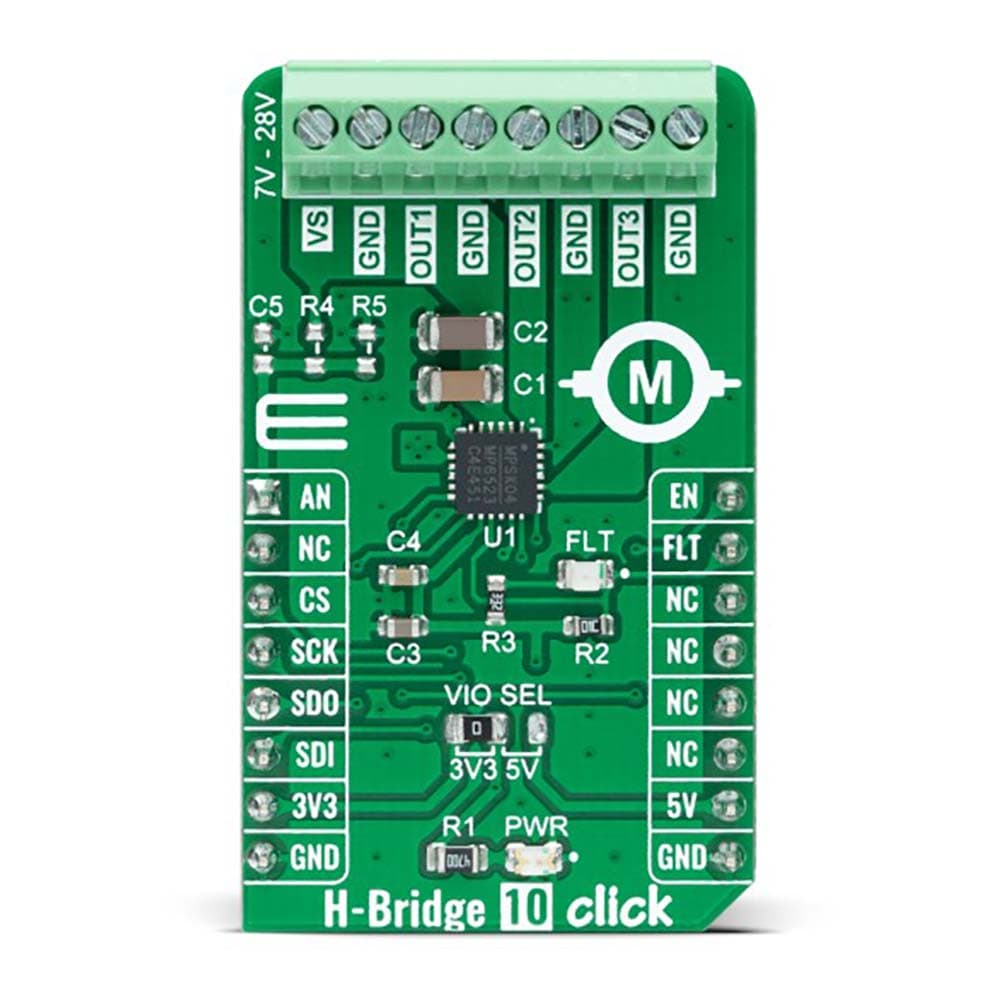
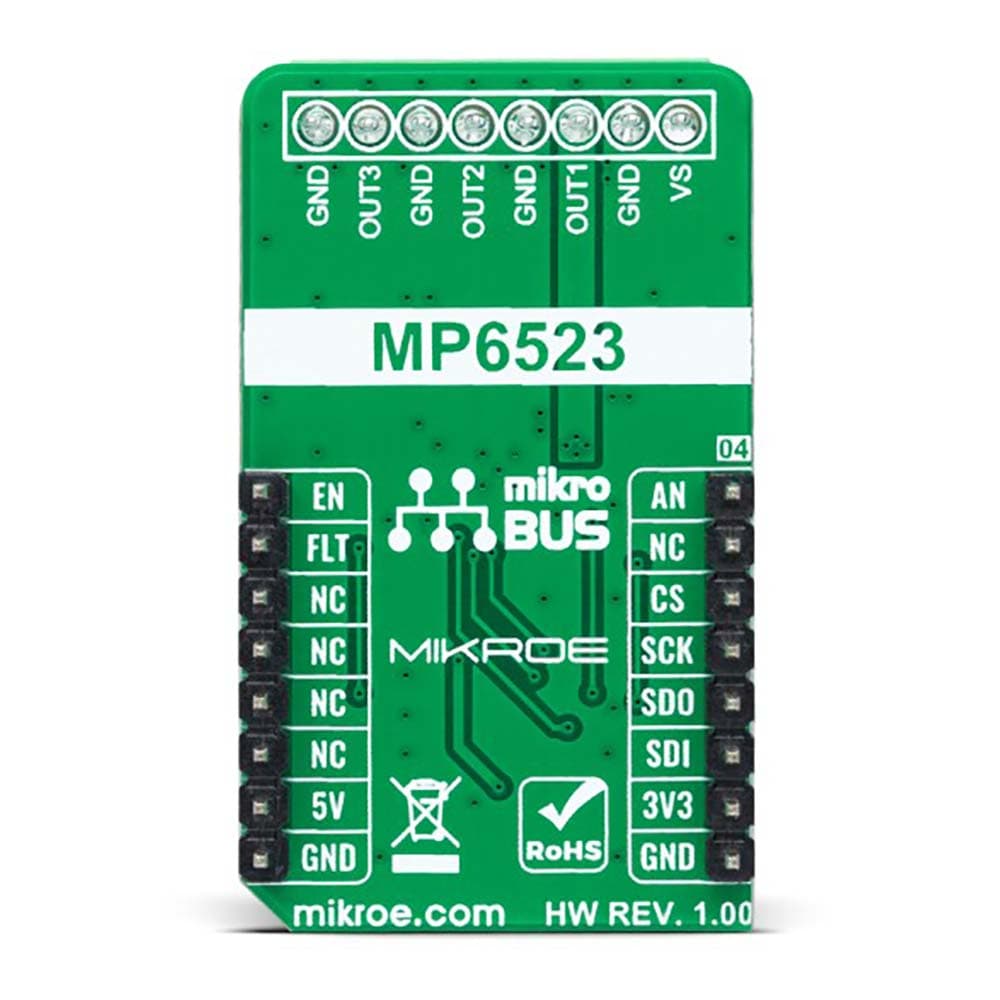
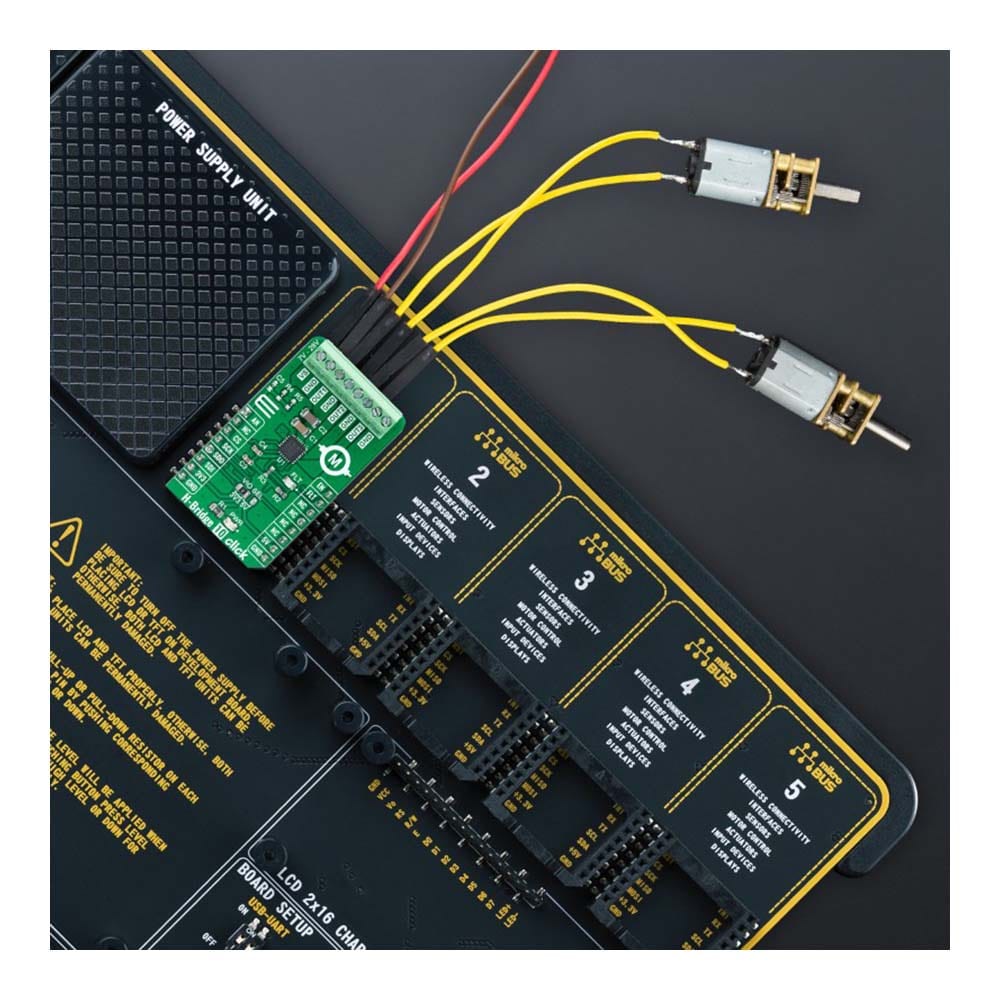
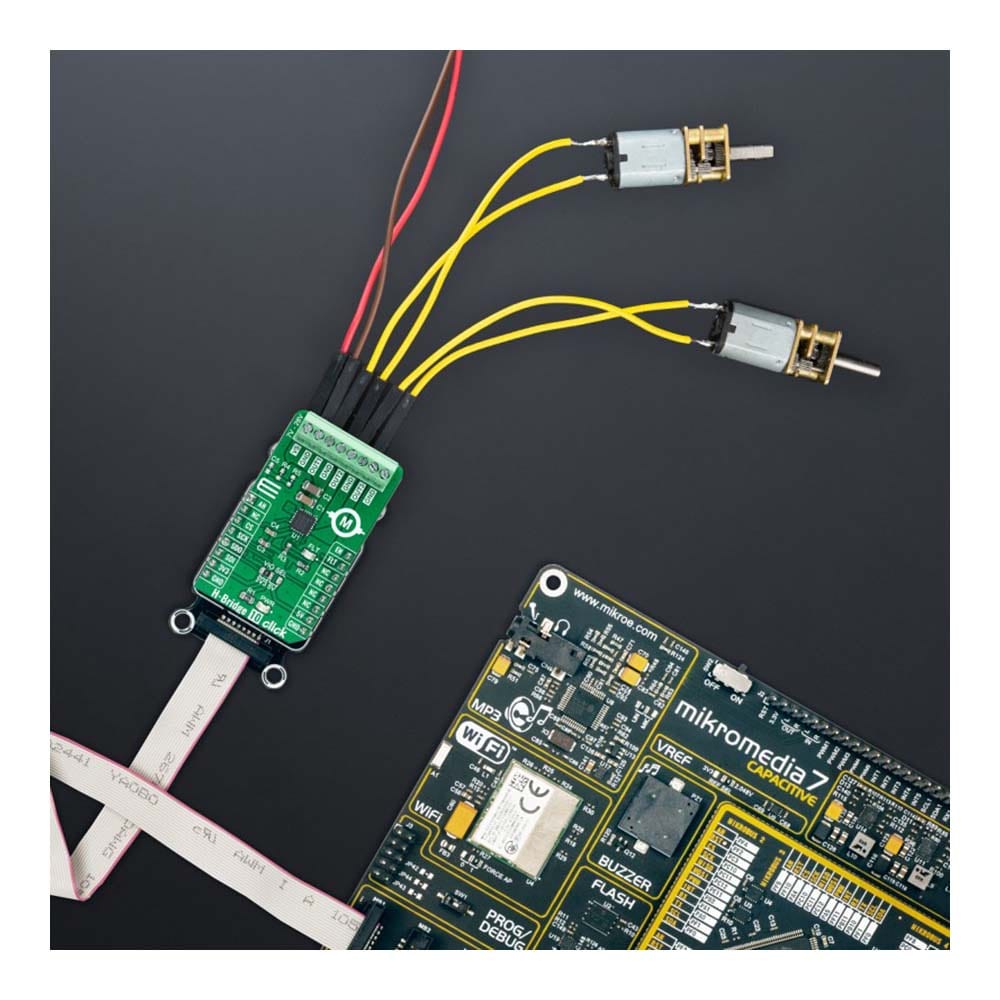
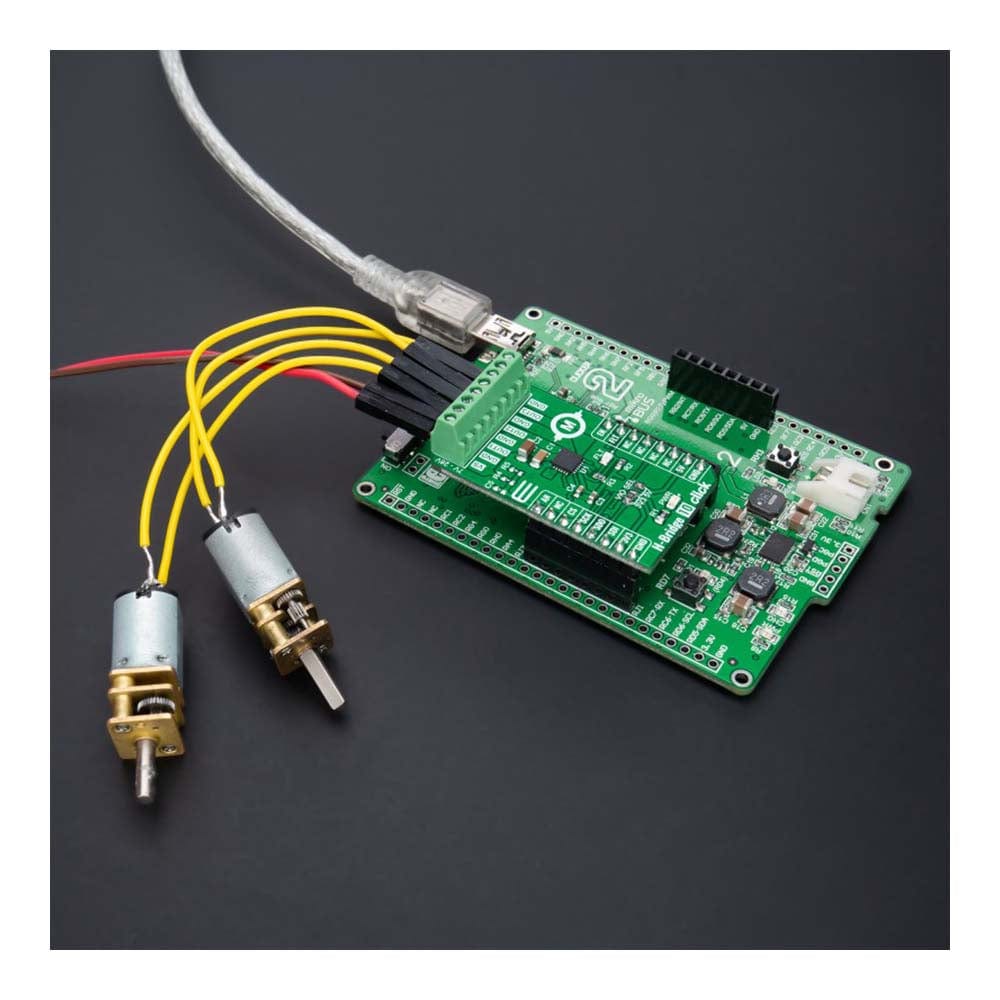
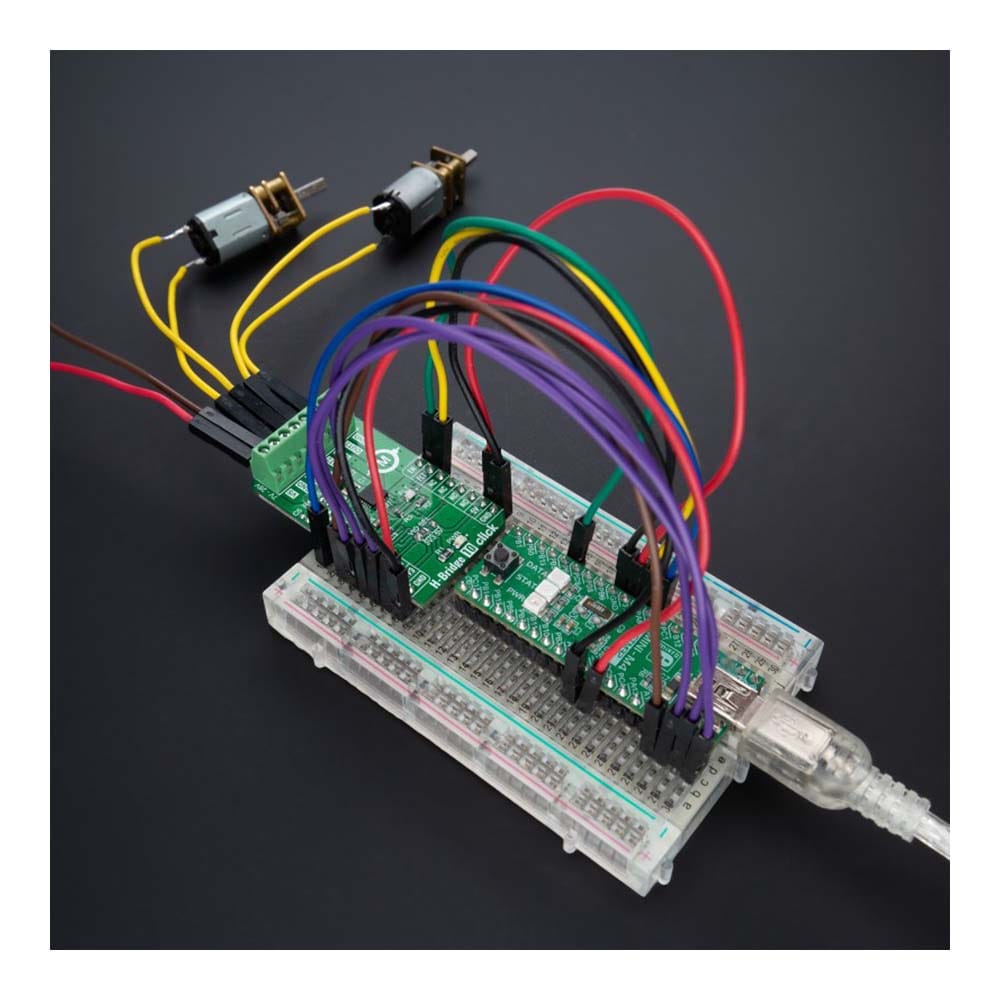
Overview
The H-Bridge 10 Click Board™ is a compact add-on board containing H-bridge outputs that let you control a DC motor to go backward or forward. This board features the MP6523, a triple, half-bridge, DMOS, output driver with integrated power MOSFETs that can drive up to three different loads from Monolithic Power Systems (MPS). The MP6523 is rated for an operating voltage range from 7V to 28V. It is SPI-configurable and has various diagnostic functions. Complete protection features include short-circuit protection (SCP), under-voltage protection (UVP), and thermal shutdown, alongside an onboard power supply existence-check circuit. This Click board™ is suitable as a multiple brushed DC motor driver for driving various loads in automotive and industrial applications, and more.
The H-Bridge 10 Click Board™ is supported by a mikroSDK compliant library, which includes functions that simplify software development. This Click board™ comes as a fully tested product, ready to be used on a system equipped with the mikroBUS™ socket.
Downloads
La carte Click Board™ H-Bridge 10 est une carte complémentaire compacte contenant des sorties en pont en H qui vous permettent de contrôler un moteur à courant continu pour qu'il avance ou recule. Cette carte comprend le MP6523, un pilote de sortie DMOS triple en demi-pont avec des MOSFET de puissance intégrés qui peuvent piloter jusqu'à trois charges différentes à partir de systèmes d'alimentation monolithiques (MPS). Le MP6523 est conçu pour une plage de tension de fonctionnement de 7 V à 28 V. Il est configurable par SPI et dispose de diverses fonctions de diagnostic. Les fonctions de protection complètes comprennent la protection contre les courts-circuits (SCP), la protection contre les sous-tensions (UVP) et l'arrêt thermique, ainsi qu'un circuit de vérification de l'existence de l'alimentation électrique embarquée. Cette carte Click™ convient comme pilote de moteur à courant continu à balais multiples pour piloter diverses charges dans les applications automobiles et industrielles, et plus encore.
La carte Click Board™ H-Bridge 10 est supportée par une bibliothèque compatible mikroSDK, qui comprend des fonctions qui simplifient le développement logiciel. Cette carte Click Board™ est un produit entièrement testé, prêt à être utilisé sur un système équipé du socket mikroBUS™.
| General Information | |
|---|---|
Part Number (SKU) |
MIKROE-5108
|
Manufacturer |
|
| Physical and Mechanical | |
Weight |
0.02 kg
|
| Other | |
Country of Origin |
|
HS Code Customs Tariff code
|
|
EAN |
8606027389061
|
Warranty |
|
Frequently Asked Questions
Have a Question?
Be the first to ask a question about this.

